Areas of opportunity for product managers in 2023 (& how Productboard can help)

Over the past few years, we’ve seen a lot of volatility, both in the world at large and within the tech industry. A cloud of uncertainty looms overhead with today’s economic environment. In 2023, we see customers questioning every expenditure as businesses look to reduce costs. Many leaders have been shifting from a pure focus on growth at all costs to efficiency and profitability. Revenue and ROI take precedence over experimentation and risk-taking.
Yet in the face of challenges, there are also opportunities. There’s never been a more important time to:
- Get products and features right the first time
- Maximize the ROI of your product decisions
- Optimize productivity and alignment across your product organization
- Show customers you’re really listening
In all these ways, a product management system like Productboard can help.
Together, we’ll brave this storm. And if we’re able — forge ahead in the meantime, barely breaking our stride.
Opportunity #1: Get products & features right the first time
These days, there’s no time to waste shipping products and features users don’t really need, or losing cycles by working off of flawed assumptions. Gradually iterating toward the right solution is a price most teams can ill afford. Prevent these missteps by equipping your team with relevant user insights to support important product decisions.
Optimize your feedback pipeline
It’s more important than ever to keep open lines of communication for the sharing of product ideas and market insights. On the Insights board in Productboard, you have a centralized feedback repository for collecting feedback on an ongoing basis. Include all your stakeholders in the process, as this feedback can arrive (and be submitted) from many integrated sources like support platforms, CRMs, messaging solutions, sales tools, and CRMs. This will ensure that no valuable insights slip through the cracks!
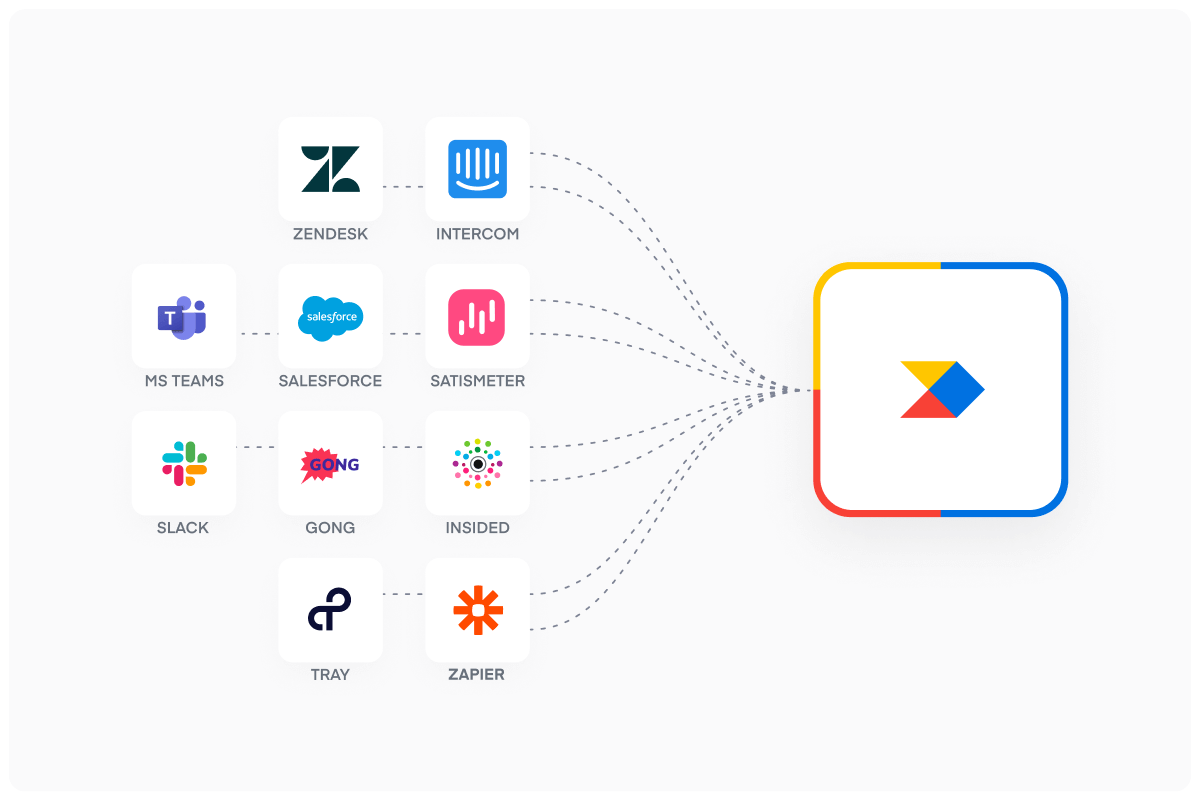
Back product decisions with user insights
One of the best ways to cut down on wasted effort is by practicing continuous product discovery — the process of continuously collecting user insights so they’re on hand when you’re ready to prioritize features. With this information on hand, you’ll have a big head start in uncovering the underlying user need behind feature requests so you’re equipped to deliver the optimal solution.
In Productboard, you can review product feedback to identify interesting user insights and link them to related feature ideas. Of course, time is of the essence, so take advantage of Productboard’s intelligent capabilities for automatically distilling trends in large volumes of feedback — called “smart topic detection.”
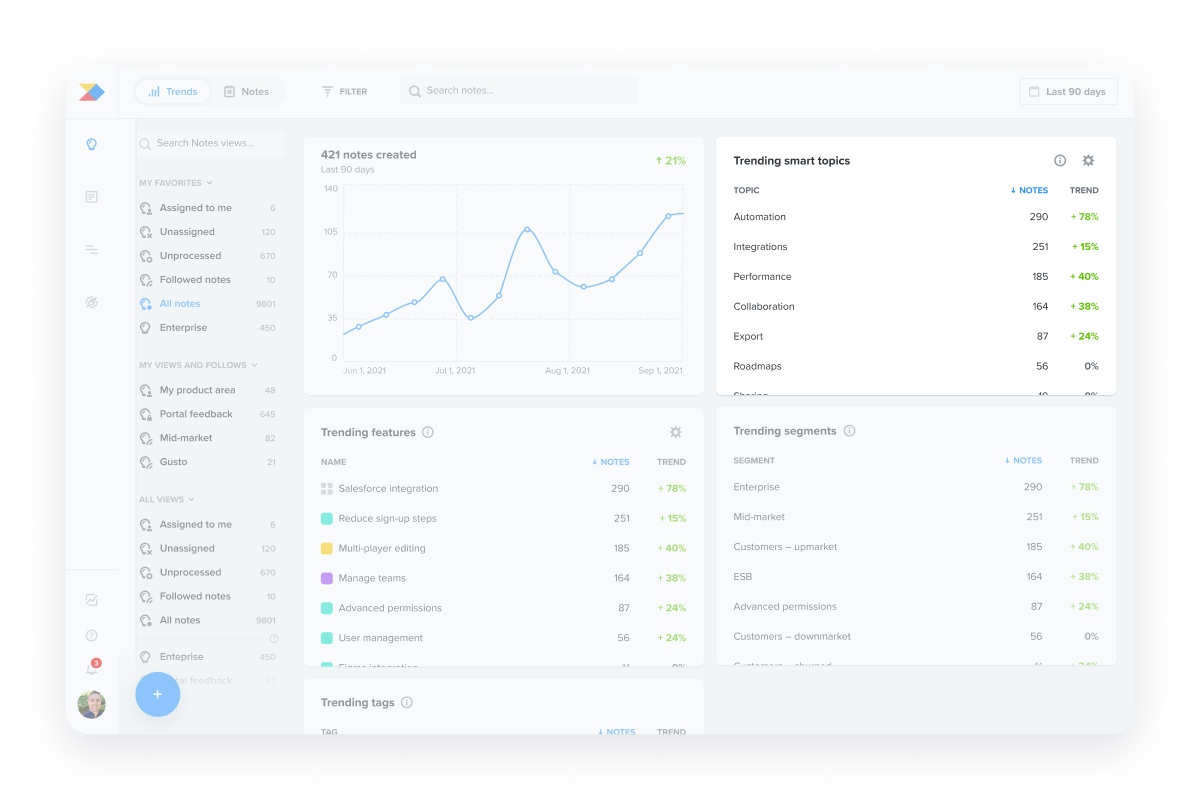
The ability to pull out trends and themes, and to segment feedback in a meaningful way, allows you to identify relevant feedback and actionable insights. You can also personalize your Insights board to put your most important views front and center. This allows you to follow specific users, companies, segments, and product areas and easily review all related feedback.
This is how teams can do continuous discovery in a scalable way and ensure that the voice of the customer echoes in every product decision.
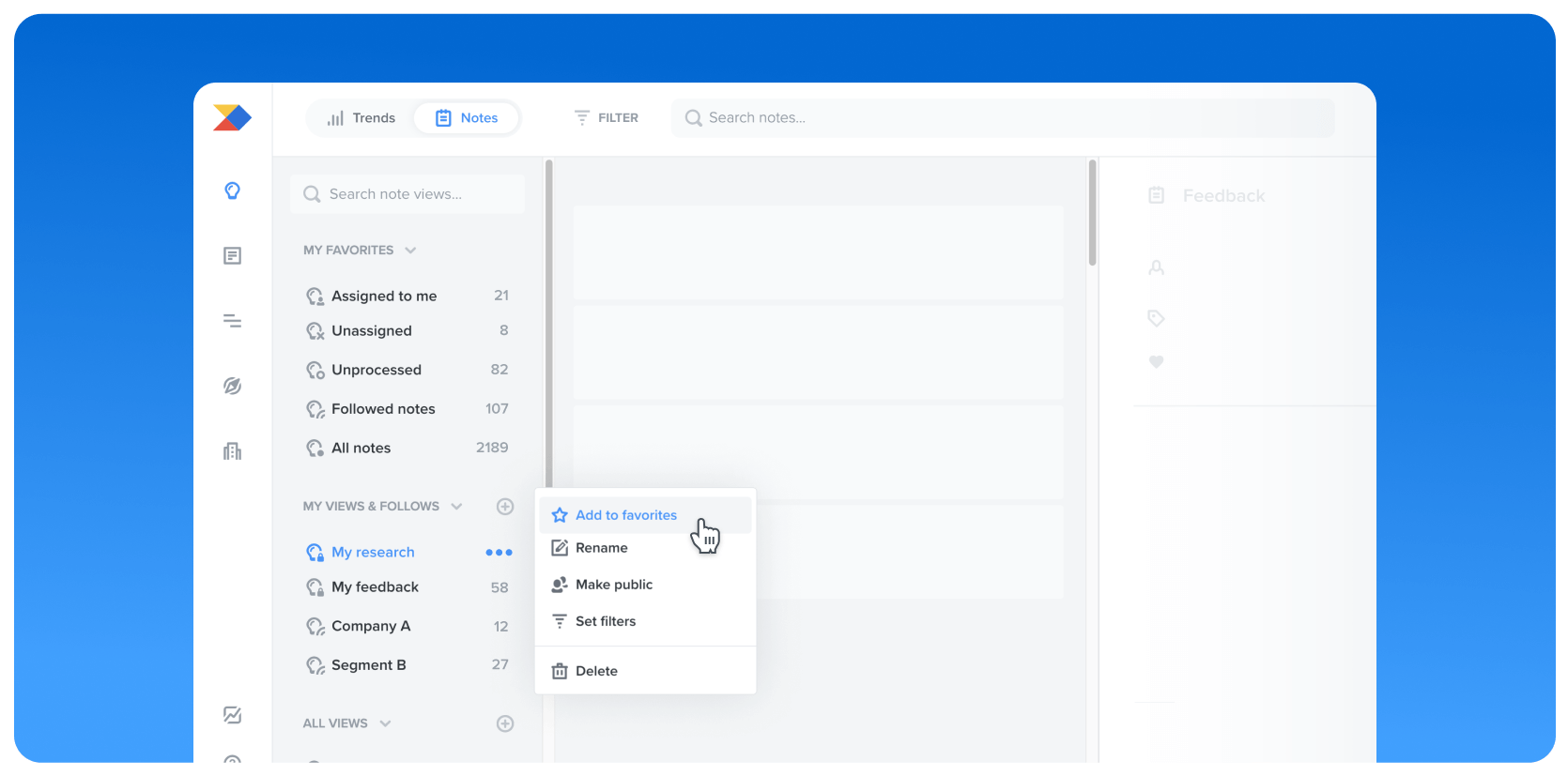
Personalize the Insights board to put your most relevant feedback front and center
Opportunity #2: Maximize the ROI of your product decisions
With tightening budgets and the pressure to do more with less, it’s more important than ever to back your product decisions with data and demonstrate their impact.
Product managers have always dreamed of being able to attach a dollar amount to every feature idea to understand the revenue building each feature might help them gain or retain. Now this dream can become a reality!
See what every feature idea is worth ($) to your business
With aggregated company fields, you can aggregate any numerical field associated with customer companies in your Productboard workspace (such as how much money they’re paying you) and see a total value for each feature idea — based on which features each company has requested.
In the past, you could use the Opportunity value field to calculate how much revenue each feature could help you generate from closing new opportunities. With the new aggregated company fields, this can be done for all your customers.
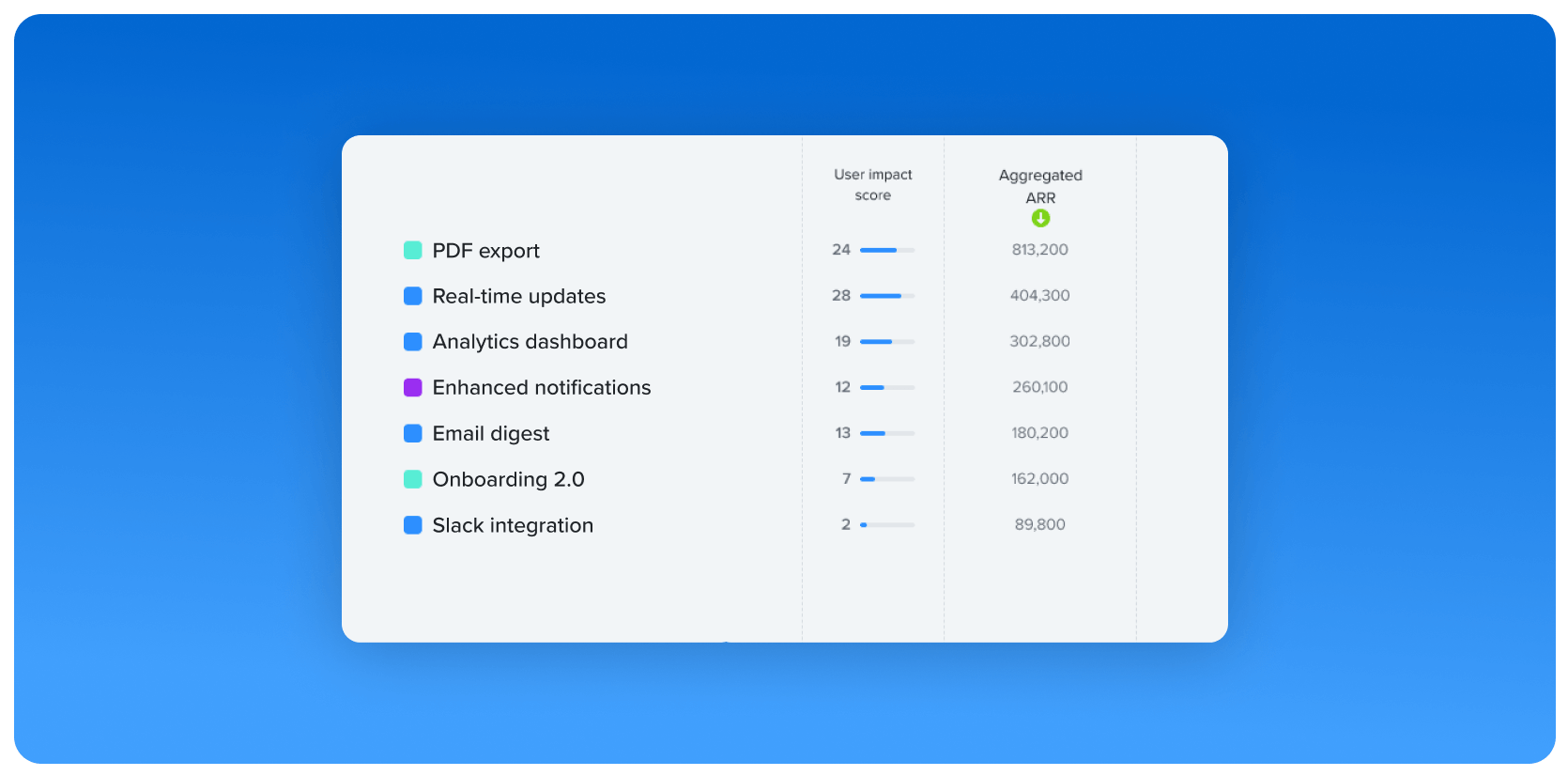
Make data-driven prioritization decisions
Productboard offers customizable formulas you can use to standardize your organization’s prioritization processes and make more data-driven decisions. You can define formulas based on popular prioritization frameworks (RICE, WSJF, ROI), or customize them to create your own.
In addition to rolling up custom number fields into scores, you can also factor in the user impact score (e.g. to represent the “impact” value in a RICE score) and the effort field (e.g. to serve as the denominator of a value/effort ratio). All these updates will help your team take a more systematic approach to prioritizing the features that will have the greatest impact on your customers and your business.
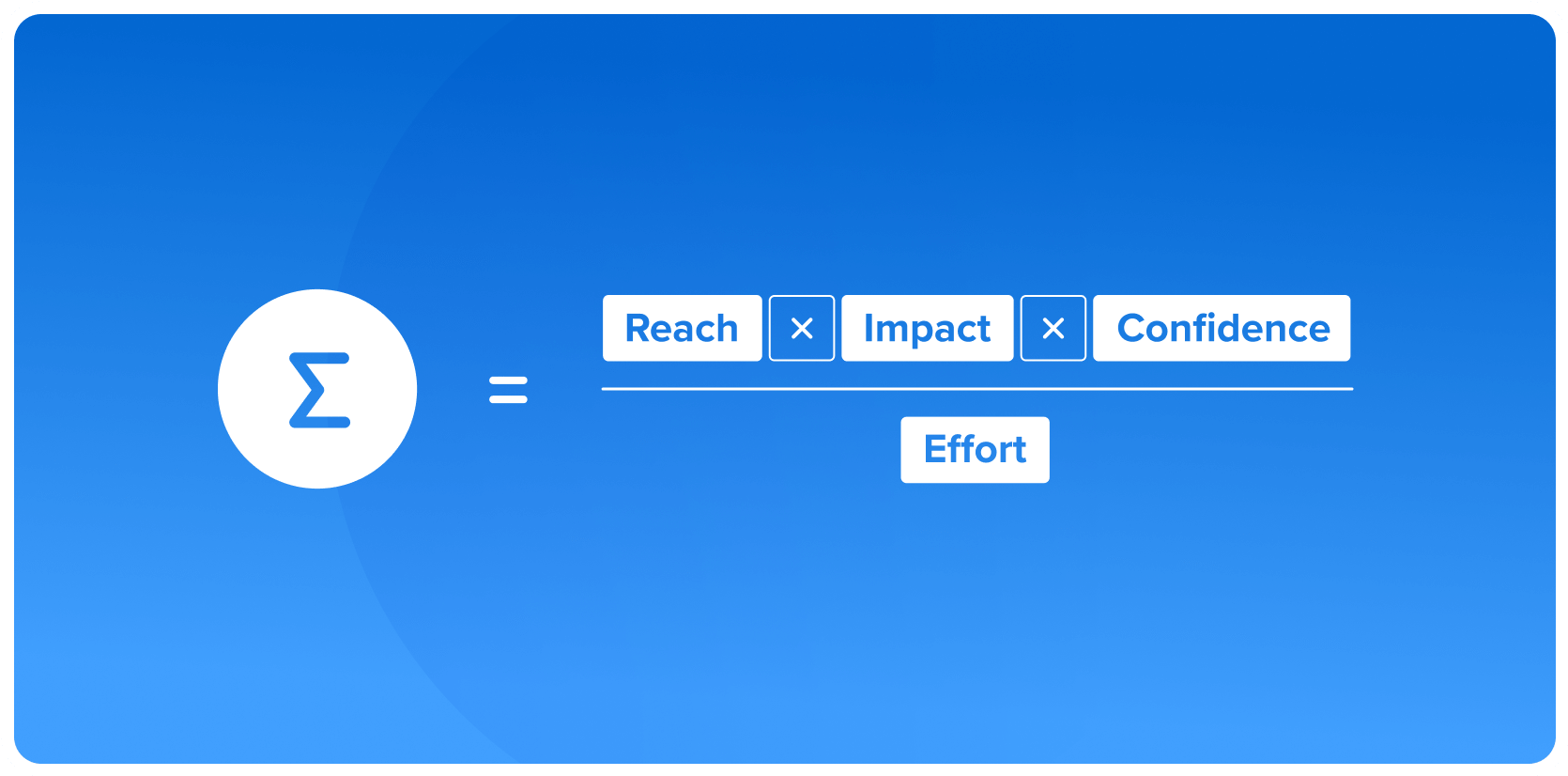
Opportunity #3: Optimize productivity and alignment across your product organization
If — like the majority of product teams — you’re trying to do more with less, you need to be more aligned, and not just within your own team. Clear communication and fostering a culture of transparency is critical to keep everyone in-sync on what’s planned and how timelines are being impacted by new obstacles.
Remove bottlenecks with efficiency reports
Efficiency reports help you get features to market faster by answering questions like these:
- How long does it take to deliver features on average?
- Is my product organization becoming more or less efficient over time?
- As features progress from conception to launch, where are they getting held up the longest?
- Within each status/phase, which features have been there the longest, and who’s working on them?
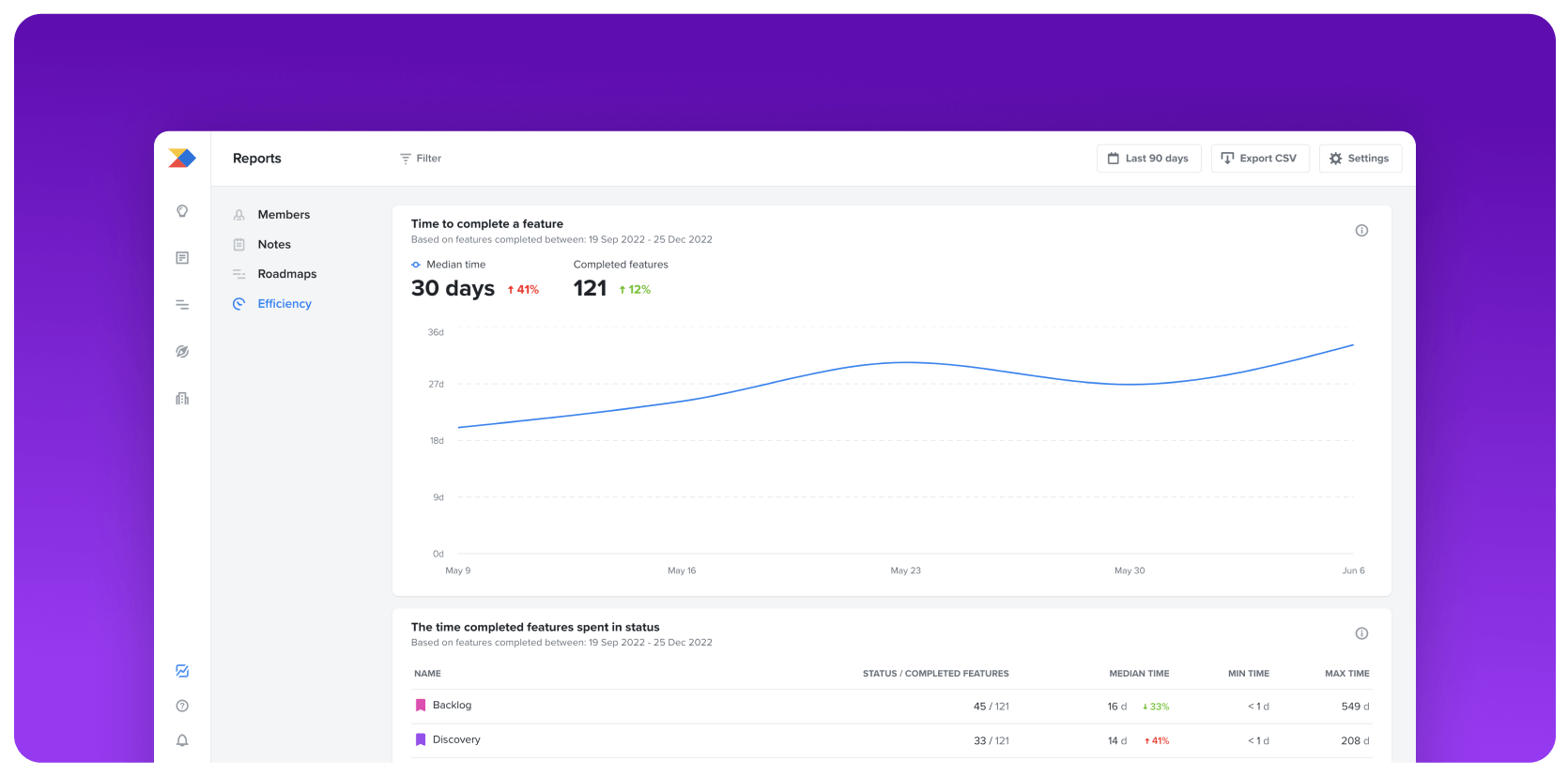
Ensure every team is working on what matters with allocation reports
Allocation reports help product leaders ensure that the work product teams are doing is really advancing the overarching strategy. They help answer questions like these:
- How many features have you shipped within each objective, theme, or product area?
- How much effort have you expended toward each objective, theme, or product area?
- At a glance, how much work being done falls outside of your stated areas of focus?
- Within each area of focus, what features have been worked on, who owns them, and how much effort did they require?
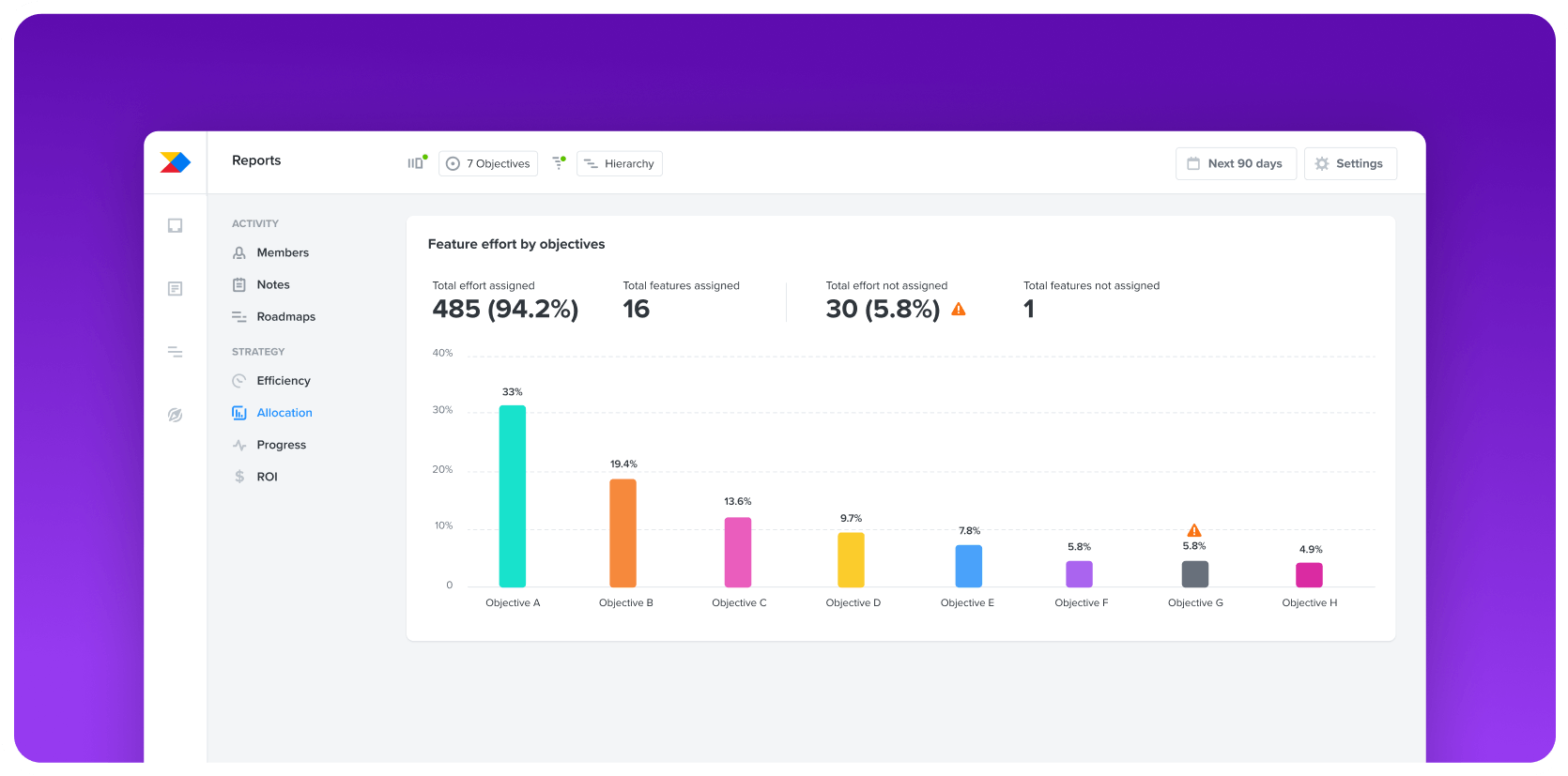
Keep stakeholders up-to-date with tailored, dynamic roadmaps
Roadmaps mean different things to different people. To make communication more efficient, product managers can create tailored, self-serve roadmaps in Productboard that are always up-to-date and provide just the right amount of detail for each stakeholder.
This turbo-charges your product discovery process, helping you crowdsource new problems or look at existing problems in a new light. And, when folks are looped in early, it’s easier to earn buy-in down the road.
Opportunity #4: Show customers you’re really listening
In times of hardship, when budget-constrained customers may be at risk, there’s no choice but to double down on investing them in your solution and where it’s headed next. To turn passive users into champions, give them a voice in the process and show them you’re listening.
Track any customer’s needs and provide tailored updates
Productboard’s new Customer board provides an overview of each user and company so you can see what they’ve requested in the past and what progress your team has made toward addressing their needs. You can also access additional data about customers here, including attributes brought in from your CRM. All this information is invaluable if you’re reviewing the needs of your VIP customers, preparing for a quarterly business review, or looking to recruit the right customers for user research, a beta program, or your customer advisory board.
Naturally, it’s not just product makers and leaders who will benefit from this information. Customer success managers and account managers have long struggled to capture information on user needs, past requests, and product team progress in traditional customer success platforms. Now they can use Productboard to help manage their book of business, delight customers to drive renewals, and help retain key accounts.
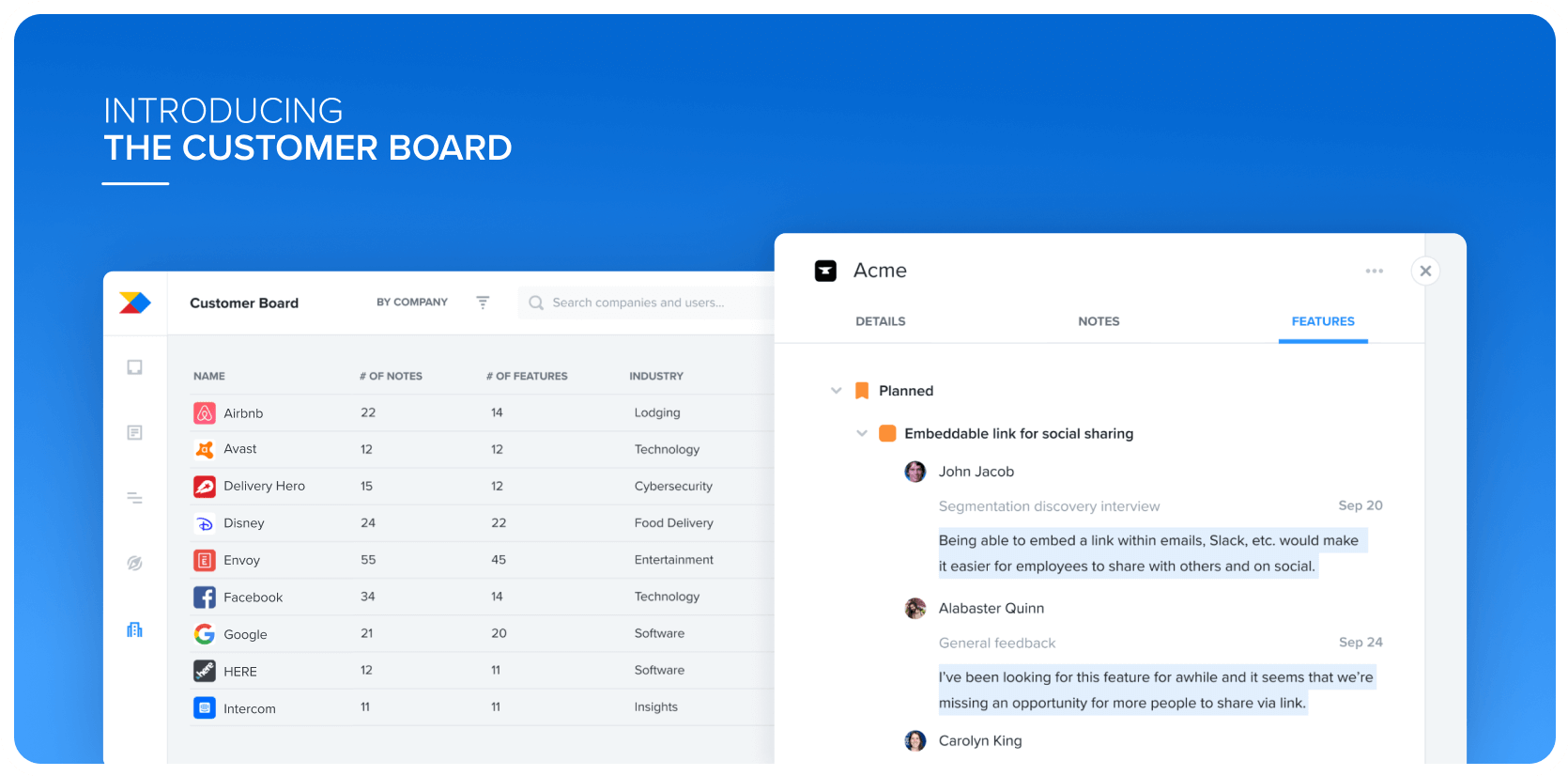
Invest customers in your product direction
The Product Portal is an interface you can share with colleagues and customers to showcase what’s planned, collect votes and feedback on ideas, and source new requests. It’s a great way to both earn buy-in for where your product is headed and validate feature ideas before you work on them.
You can start by adopting the Portal internally with colleagues, or share it only with a select set of customers. When ready, share your Portal with all customers, make it public, or even embed it within your app or website.
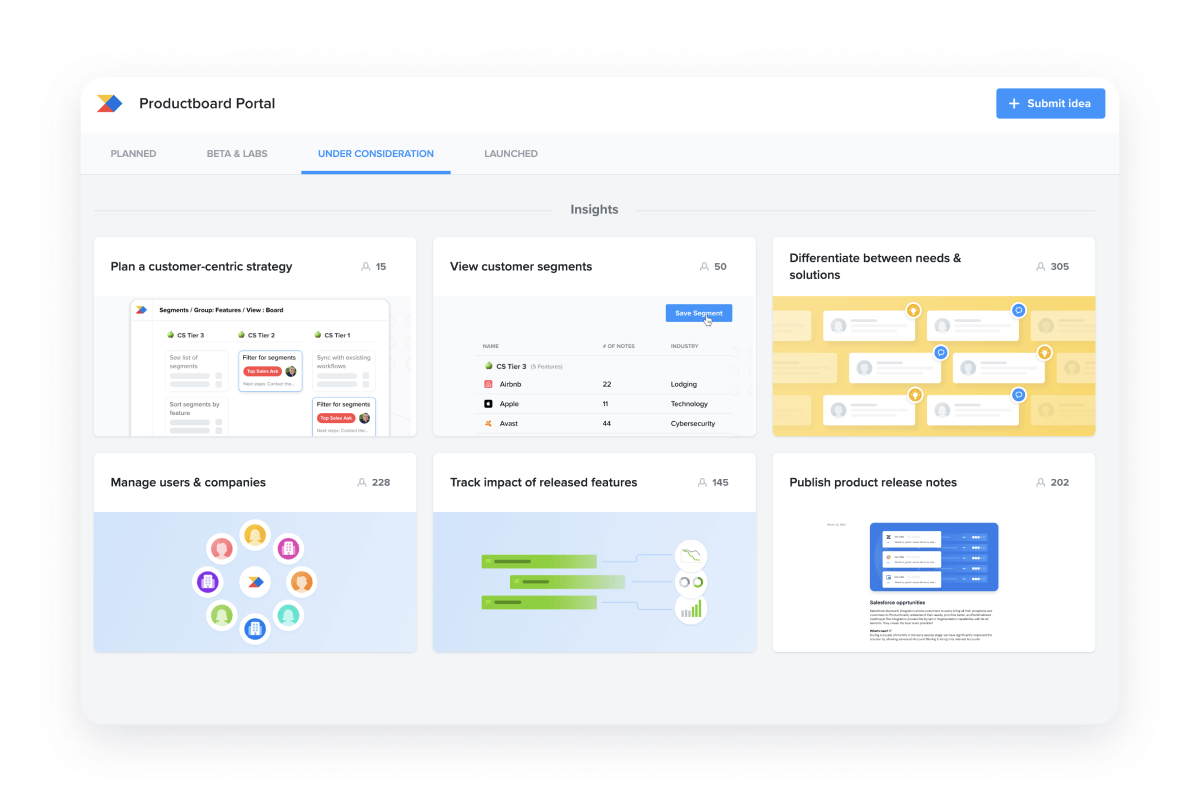
To learn more about how Productboard can help your product organization to seize opportunity in the face of uncertainty, request a personalized demo.





